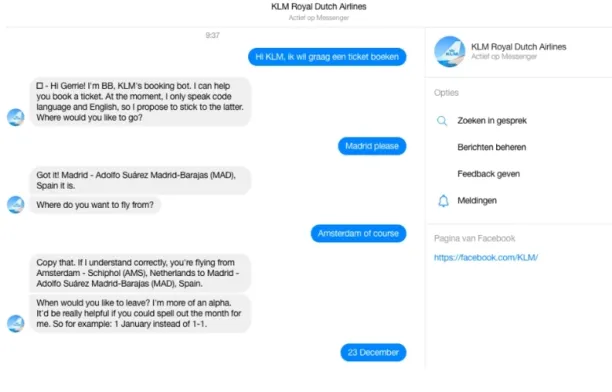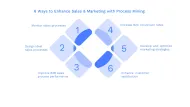Chatbot Marketing: 3 Benefits, 7 Use Cases & 3 Case Studies in '24
For some customers, the quality of customer service is more important than price: the average customer willing to spend up to 16%1 for “quality customer service.” An engaging customer experience; therefore, is of the utmost importance.
However, in today’s omnichannel environment, delivering a consistent level of personalized support with contact center employees would be prohibitively expensive.
This article will discuss how companies should use chatbots for marketing efforts to automate conversations with current and potential customers to streamline their conversational commerce initiatives.
What is chatbot marketing?
Chatbot marketing is deploying chatbots on messaging apps, like WhatsApp, websites, and/or mobile apps to:
- Answer customer queries
- Provide product recommendations
- Offer customer support
- Handle transactions
Because chatbots can operate 24/7, and handle multiple conversations in different languages simultaneously, they offer a cost-effective way to scale customer engagement, improve user experience, and gather valuable data for further marketing analysis.
Learn more about chatbot benefits.
What are the top benefits of chatbot marketing?
Used as part of digital marketing efforts, the following are the top benefits of using chatbots for marketing:
1. Workforce augmentation
Your marketing/sales team can delegate time-consuming tasks, like product recommendations, FAQ handling, and order status to chatbots. This frees up human agents’ time, allowing them to focus on value-adding initiatives, like creating a marketing strategy that takes ESG into consideration.
2. Engaging & personalized shopping experience:
AI and generative chatbots can transform the typical robotic e-commerce experience into an engaging interaction that mimics a human interaction.
Moreover, Advanced chatbots, with machine learning algorithms, can remember past conversations, track user behavior on the site, and then use this information to provide personalized product recommendations, promotional offers, and content.
71%2 of customers expect to receive personalized responses, and 67% get frustrated when that’s not offered. Furthermore, companies that “excelled” at personalization generated 40% more revenue than those that didn’t. Therefore, by personalizing responses, companies can improve on customer loyalty and conversion rates.
Learn more about customer engagement automation.
3. Global reach
A part of marketing is appealing to a wider audience, such as international markets. Chatbots can be equipped with NLP models that handle multiple languages, to serve a diverse, global customer base regardless of the time zone. Moreover, by utilizing users’ geographical data and ML features, chatbots offer localized content and adapt interactions to respect cultural nuances.
What are the top chatbot marketing use cases?
Lead generation
1. Outbound marketing
Traditional outbound marketing efforts include using ads, flyers, cold emails, and cold calls.
Chatbots, instead, can:
- Show a pop-up ad that introduces the product/service
- Direct the user to the relevant webpage, when it’s clicked on.
Moreover, marketing chatbots can send users promotional videos, blog posts, and recommendations based on their geographical location, interests, and past interactions.
For example, Deltic Group3, UK’s biggest administrator of bars and clubs deployed an intelligent chatbot that used website visitors’ location to:
- Recommend nearby venues
- Give relevant venue information
- Direct the user to a human agent, if they showed interest
2. Inbound Lead generation
After the outbound marketing process, a chatbot can help generate leads by:
- Collecting customer information in an interactive format instead of form-filling
- Understanding the user better with personalized questions and surveys
- Providing in-depth information about the products/services
Customer service
3. Instant, omnichannel support
For more than 50%4 of users, the average customer journey involves using 3-5 channels to make a purchase or resolve a request. Chatbots can help the sale steam maintain a consistent level of omnichannel support by:
- Being available 24/7
- Providing instant response without transferring to agents
- Providing self-service capabilities
- Supporting different languages
For instance, Domino’s AnyWare’s chatbot processes customer orders through Facebook messenger, Google home, and other channels/devices. According to Shorty Awards5, Domino’s AnyWare chatbot generated 2 billion earned media impressions, and a 10.5% YoY sales growth for the company.
4. Providing product information
A marketing chatbot with ML algorithms can offer dynamic and interactive ways to provide product information.
For example, if a customer asks about gaming laptops, the chatbot can present a list of laptops with high-end graphics cards and processors. It could then refine the options by asking about the user’s screen size preferences or budget.
5. Collecting customer reviews
A product with +5 reviews has a 270%6 more chance of being purchased than a product with no reviews. So instead of waiting for customers to submit reviews, companies can use chatbots to:
- Send post-purchase surveys
- Ask customers about their feedback directly, with rating scales, multiple choice questions, buttons, etc.
- Perform sentiment analysis to classify feedback
The answers can then be automatically collected and categorized in the database. The “positive” ones can be published online (with users’ consent) and the negative can be investigated.
Account management
6. Upselling and cross-selling
During checkouts or post-purchase, a chatbot can analyze the car’s items to automatically upsell and cross-sell other products.
For example, if a customer is booking a hotel room, the chatbot can offer car rentals, travelers’ insurance, or city tour tickets. Such relevant recommendations would provide added value to the customer and increase the overall order value.
7. Recovering abandoned carts
Marketing chatbots can reach out to customers who’ve added, but not check out, their carts’ items. So via timely messages, the chatbot can:
- Ask the reason for abandonment
- Offer assistance
- Provide special discount codes
In order to incentivize customers and recover abandoned carts.
What is the future of chatbots in marketing?
People are more comfortable with chatbot services today:
- 34% prefer speaking to chatbots instead of a live agent for shopping
- 33% use chatbots to make reservations and bookings
- 47% of consumers would buy items via a chatbot
- 67% of younger people purchase a product/service from brands using a chatbot
This has prompted global brands to adopt chatbots for providing customer service, and more accurate product recommendations.
What are the real-life examples of chatbots in marketing?
Some of the chatbot marketing examples include:
- Lyft (booking): The user contacts the chatbot via Facebook Messenger and Slack, or Amazon Echo, to schedule a ride
- KLM BlueBot (booking): Allows customers to book flights and track flight status updates (Figure 5).

Explore travel chatbots in more detail.
- Whole Foods (content marketing): the chatbot suggests content about recipes, cuisines, and makes diet-specific recommendations.
To invest in chatbots
If you are ready to use chatbots in your business, we provide data-driven, sortable lists of vendors:
If you have questions about how chatbots can help your business, we can help:
This article was drafted by former AIMultiple industry analyst Alamira Jouman Hajjar.
External sources
- 1. “Experience is everything. Get it right.” PWC. 2018. Retrieved on September 8, 2023.
- 2. “The value of getting personalization right—or wrong—is multiplying.” McKinsey. November 21, 2021. Retrieved on September 8, 2023.
- 3. “How AI-powered chatbots are transforming marketing and sales operations.” IBM. August 2, 2023. Retrieved on September 8, 2023.
- 4. “Redefine the omnichannel approach: Focus on what truly matters.” McKinsey. June 22, 2020. Retrieved on September 8, 2023.
- 5. “Domino’s AnyWare.” Shorty Awards. Retrieved on September 8, 2023.
- 6. “How Online Reviews Influence Sales.” Northwestern Medill. Retrieved on September 8, 2023.

Cem has been the principal analyst at AIMultiple since 2017. AIMultiple informs hundreds of thousands of businesses (as per similarWeb) including 60% of Fortune 500 every month.
Cem's work has been cited by leading global publications including Business Insider, Forbes, Washington Post, global firms like Deloitte, HPE, NGOs like World Economic Forum and supranational organizations like European Commission. You can see more reputable companies and media that referenced AIMultiple.
Throughout his career, Cem served as a tech consultant, tech buyer and tech entrepreneur. He advised businesses on their enterprise software, automation, cloud, AI / ML and other technology related decisions at McKinsey & Company and Altman Solon for more than a decade. He also published a McKinsey report on digitalization.
He led technology strategy and procurement of a telco while reporting to the CEO. He has also led commercial growth of deep tech company Hypatos that reached a 7 digit annual recurring revenue and a 9 digit valuation from 0 within 2 years. Cem's work in Hypatos was covered by leading technology publications like TechCrunch and Business Insider.
Cem regularly speaks at international technology conferences. He graduated from Bogazici University as a computer engineer and holds an MBA from Columbia Business School.
To stay up-to-date on B2B tech & accelerate your enterprise:
Follow on

Comments
Your email address will not be published. All fields are required.